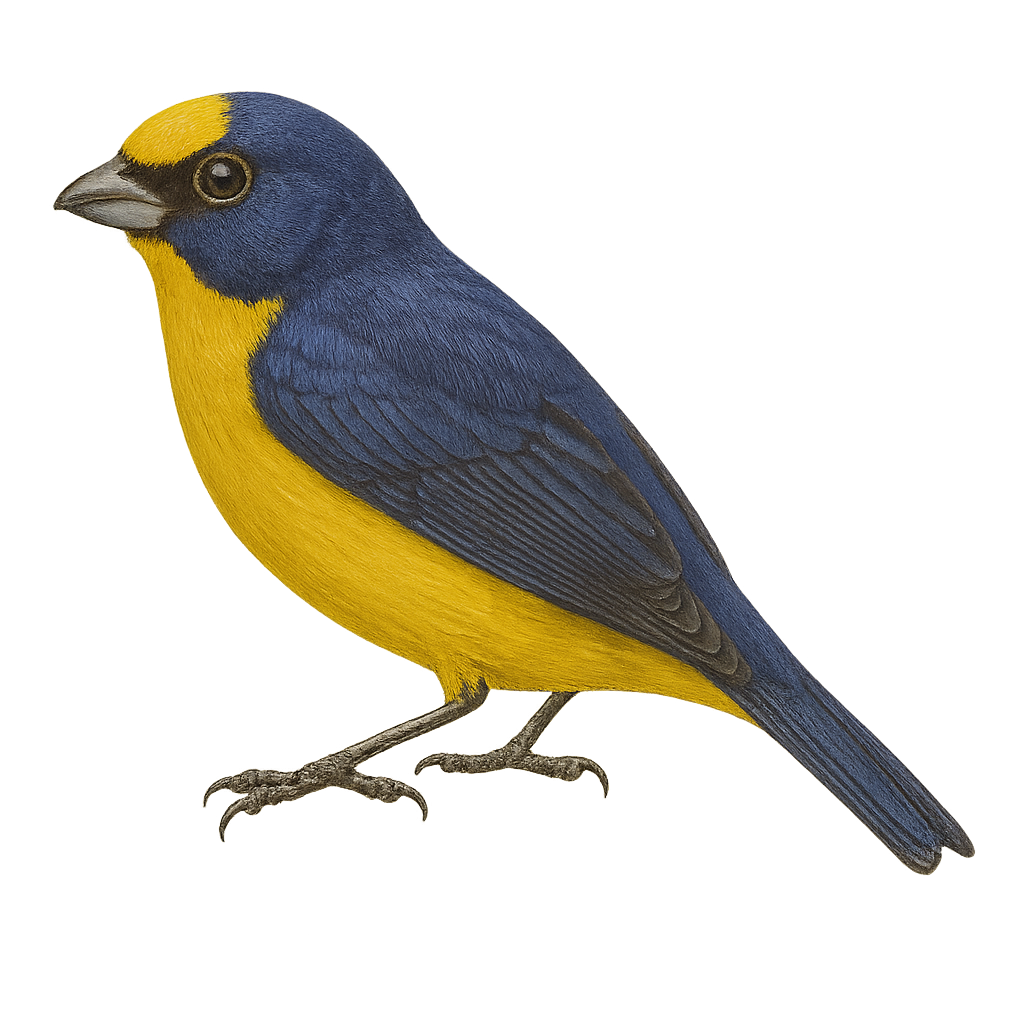Your wildlife photography guide.
Explore the yellow-throated euphonia in detail, study its behavior, prepare your shots.
Where to observe and photograph the yellow-throated euphonia in the wild
Learn where and when to spot the yellow-throated euphonia in the wild, how to identify the species based on distinctive features, and what natural environments it inhabits. The WildlifePhotographer app offers tailored photography tips that reflect the yellow-throated euphonia’s behavior, helping you capture better wildlife images. Explore the full species profile for key information including description, habitat, active periods, and approach techniques.
Yellow-throated Euphonia
Scientific name: Euphonia hirundinacea

IUCN Status: Least Concern
Family: FRINGILLIDAE
Group: Birds
Sensitivity to human approach: Suspicious
Minimum approach distance: 5 m
Courtship display: March to July
Incubation: 14-16 jours
Hatchings: March to August
Habitat:
tropical rainforests, forest edges, gardens
Activity period :
Primarily active during the day, with peak activity in the morning and late afternoon.
Identification and description:
The Yellow-throated Euphonia, or Euphonia hirundinacea, is a small, colorful bird found primarily in Central America, from southern Mexico to Panama. It is easily recognizable by its bright yellow throat contrasting with its dark blue back and yellow belly. Males and females exhibit sexual dimorphism, with females generally being duller with olive-green hues. This bird measures about 11 cm in length and weighs between 10 and 15 grams. It inhabits tropical rainforests, forest edges, and gardens, where it primarily feeds on fruits and berries. Its melodious song is often heard before it is seen.
Recommended lens:
400 mm – adjust based on distance, desired framing (portrait or habitat), and approach conditions.
Photography tips:
To photograph the Yellow-throated Euphonia, it is advisable to use a telephoto lens of at least 400mm to capture precise details without disturbing the bird. Look for it in tropical rainforests or forest edges, where it is often active during the day. Be patient and discreet, as this bird can be suspicious. Listen for its melodious song to locate its position. Opt for early morning hours to benefit from soft, natural light, and use a tripod to stabilize your camera.
The WildlifePhotographer App is coming soon!
Be the first to explore the best nature spots, track rutting seasons, log your observations, and observe more wildlife.
Already 1 430 wildlife lovers subscribed worldwide

